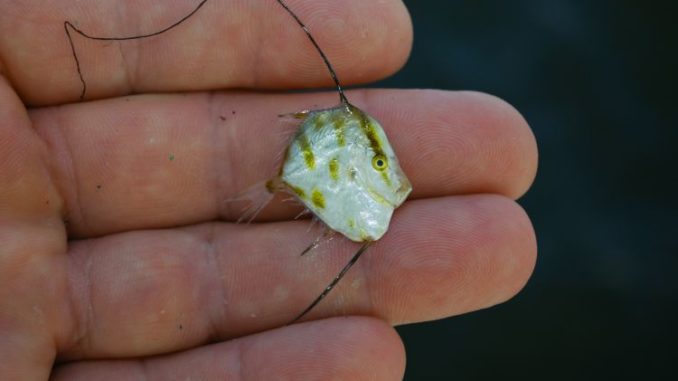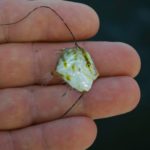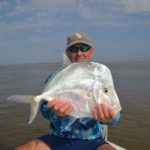
Lookdowns are good eating but hard to target
It looks like any other fish. Well actually, it doesn’t look like them — it just sees things like them.
It just looks like it’s looking down all the time.
The lookdown does, indeed, have a peculiar appearance, with its wafer-thin body, mirror-like coloration and preposterously steeply sloping forehead.
The only other fish that resembles it is the Atlantic moonfish, but it has a somewhat less sloping face and is missing the long extensions on its dorsal and anal fins.
Scientifically known as Selene vomer, it is a member of the large jack family (31 species in the U.S. Atlantic and Gulf of Mexico alone), the same family that brings to us the delectable Florida pompano and the nasty-looking bloody-fleshed crevalle jack.
Other common names listed for the species are horsehead (for obvious reasons), dollarfish (they are shaped like silver dollars), and hairfinned dory. Your guess is as good as mine on the rationale for the last name.
Lookdowns are delicious table fare, but because of their extremely flattened bodies, filleting them requires a razor sharp knife (no fast, clunky electric knife here) and precision fish-cleaning skills.
Selene, the genus name, means “moon” in Greek, an apt description because it shines like the silvery moon.
The specific name vomer interprets from Latin as “plowshare,” again very descriptive. Its silver color closely resembles the blades of a plow that have been polished by days of busting soil.
Viewed from the side, lookdowns can appear to be large fish, but because their bodies are so flattened, they weigh little. The IGFA world record is only 4 pounds, 12 ounces; it was caught in Florida in 2004.
The fish’s shape, however, makes them very good fighters on light or medium tackle. They turn their flattened bodies sideways to the angler and are difficult to wrestle into a headfirst position because they can change directions in an instant.
This body shape is what allows them to make sharp turns in capturing elusive food items.
Lookdowns are hard to target because they swim in small, scattered schools. But their normal diet of shrimp, crabs, bottom worms, and small fish like silversides (glass minnows) and anchovies means they willingly take lures like soft plastics on jigheads.
Lookdowns are found from southern Canada (in warmer months) down the Atlantic coast and through the Gulf of Mexico, southward past Brazil in South America. Considered a coastal species, they are found in waters 3 feet deep to 170 feet deep.
They are not oriented toward using reefs or other structures such as oil and gas platforms, instead seeming to prefer open, sandy or muddy bottoms for their hunting grounds.
Little is known about the spawning behavior of lookdowns, other than that they spawn offshore and are broadcast spawners, with adults discharging their eggs and sperm into the water near each other for chance fertilization.
Young lookdowns only vaguely resemble adults. They have several vertical, brownish-yellow bars on their bodies and extremely long filaments on their dorsal and anal fins.
Very small lookdowns hang out in floating sargassum weeds and debris, feeding on tiny zooplankton. As they grow larger, they move nearer to shore, form schools and begin feeding on bottom creatures.
Adult lookdowns seem to be very adaptable, having been found in salinities of 9 to 45 parts per thousand (normal full strength seawater is 35 ppt) and temperatures of 61 to more than 100 degrees.
Lookdowns are among the fish species capable of making sounds: They make loud grunts using their swim bladders and pharyngeal (throat) teeth.
Lookdowns’ are so incredibly shiny and mirror-like they appear to be scaleless. But, like other jacks, they have small scales — only theirs are very small and deeply embedded in the skin.
Their color and body shape serve to protect them. When swimming in a group viewed from the side, everything appears to be a mass of shimmering confusion. Then when they turn head-on or directly away from the viewer, the body profile is so thin they seem to disappear.
Scientists have recently determined their coloration is effective open-water camouflage. The scales manipulate light to match surrounding polarization conditions. With this “polaro-crypsis,” lookdowns can effectively match the light environment of open water at all times of day.
While lookdowns might never make the top-10 list of game fishes, their unique body shape and brilliant reflectiveness are making them a desirable aquarium fish, both for public aquaria and larger home aquariums.




